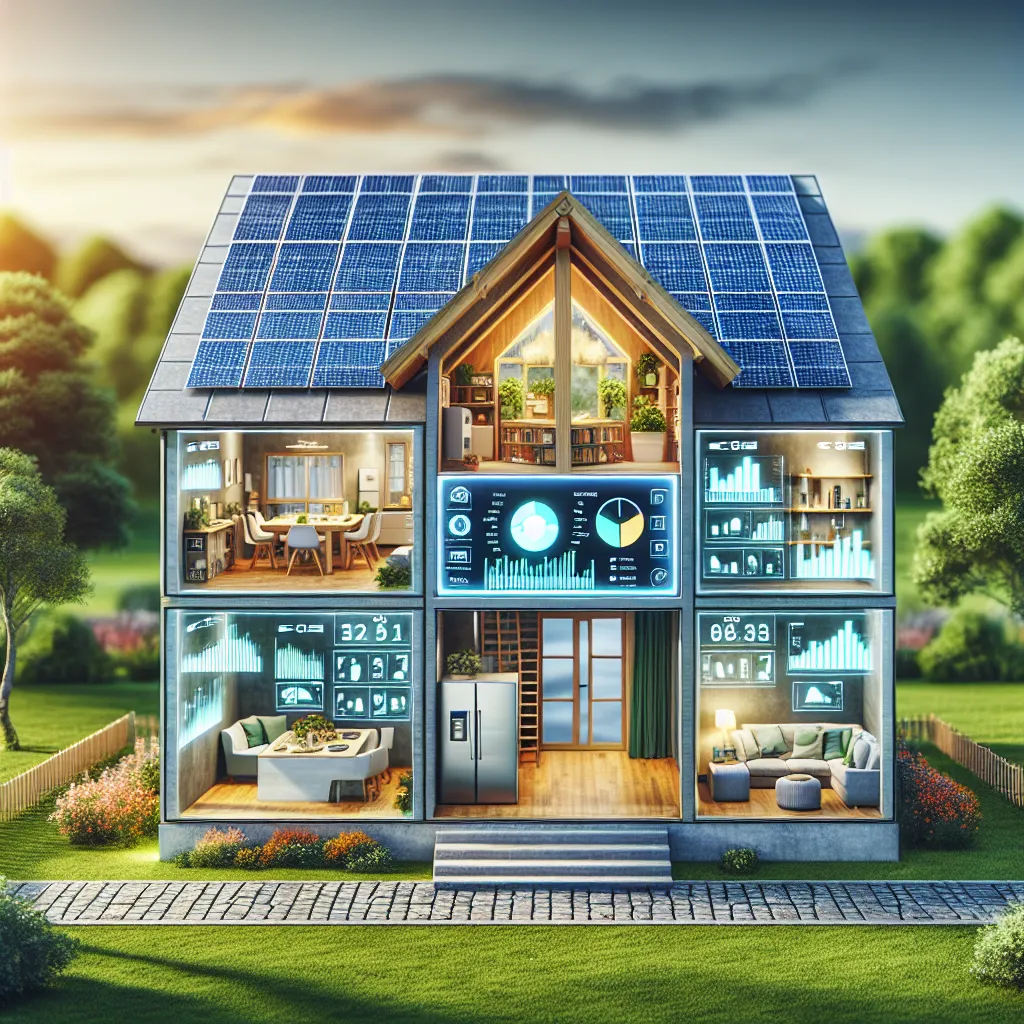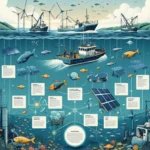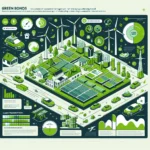As an experienced IELTS instructor, I’m excited to share with you a comprehensive reading practice test focused on the topic of energy-efficient technologies in homes. This test will help you prepare for the IELTS Reading section while exploring an important contemporary issue. Let’s dive into the passages and questions!
 Energy-efficient smart home
Energy-efficient smart home
Introduction
The IELTS Reading test consists of three passages of increasing difficulty, followed by a series of questions. Today’s practice test revolves around “The rise of energy-efficient technologies in homes,” a topic that’s becoming increasingly relevant in our eco-conscious world. This test will challenge your reading comprehension skills while introducing you to valuable vocabulary and concepts related to sustainable living.
Passage 1 (Easy Text)
The Growing Importance of Energy Efficiency in Homes
In recent years, there has been a significant shift towards energy efficiency in residential buildings. Homeowners are becoming increasingly aware of the environmental and financial benefits of reducing their energy consumption. This trend is driven by a combination of factors, including rising energy costs, growing environmental consciousness, and technological advancements.
One of the primary ways homeowners are improving energy efficiency is through better insulation. Modern insulation materials, such as spray foam and reflective barriers, can significantly reduce heat loss in winter and heat gain in summer. This leads to lower heating and cooling costs throughout the year.
Another area of focus is lighting. Traditional incandescent bulbs are being replaced by energy-efficient alternatives like LED (Light Emitting Diode) bulbs. These not only consume less electricity but also have a much longer lifespan, reducing both energy usage and replacement costs.
Appliances are also undergoing an energy-efficient revolution. Energy Star certified products, which meet strict efficiency guidelines set by the U.S. Environmental Protection Agency and the Department of Energy, are becoming the norm in many households. These appliances use 10-50% less energy than standard models, resulting in substantial savings over time.
Smart home technology is playing an increasingly important role in energy management. Programmable thermostats allow homeowners to automatically adjust their home’s temperature based on their daily routines, while smart power strips can cut off power to devices that are not in use, eliminating “vampire” energy drain.
As we look to the future, the trend towards energy-efficient homes is likely to continue. With ongoing technological advancements and increasing awareness of climate change, homeowners will have even more options to reduce their energy consumption and create more sustainable living spaces.
Questions 1-5
Do the following statements agree with the information given in the passage?
Write
TRUE if the statement agrees with the information
FALSE if the statement contradicts the information
NOT GIVEN if there is no information on this
- Energy efficiency in homes has become more important in recent years.
- Modern insulation materials are less effective than traditional ones.
- LED bulbs consume more energy than incandescent bulbs.
- Energy Star certified appliances use between 10% and 50% less energy than standard models.
- All homeowners are required to install smart home technology.
Questions 6-10
Complete the sentences below.
Choose NO MORE THAN TWO WORDS from the passage for each answer.
- Better insulation helps reduce __ __ in winter.
- LED bulbs have a much longer __ than traditional bulbs.
- Smart power strips can eliminate “__” energy drain.
- __ __ allow homeowners to automatically adjust their home’s temperature.
- The trend towards energy-efficient homes is likely to __ in the future.
Passage 2 (Medium Text)
The Impact of Smart Home Technologies on Energy Consumption
The integration of smart technologies into our homes has revolutionized the way we manage energy consumption. These innovations, collectively known as the Internet of Things (IoT), have enabled homeowners to monitor and control their energy usage with unprecedented precision and convenience.
One of the most significant contributions of smart home technology to energy efficiency is the ability to optimize heating and cooling systems. Smart thermostats, for instance, learn from user behavior and environmental conditions to create efficient heating and cooling schedules. Some advanced models can even adjust based on real-time energy prices, shifting energy-intensive activities to off-peak hours when electricity is cheaper.
Lighting control systems have also seen significant advancements. Beyond simple motion sensors, modern smart lighting can adjust based on natural light levels, time of day, and occupancy patterns. Geofencing technology enables lights to turn off automatically when the last person leaves the house and turn on when someone returns, eliminating wasted energy from forgotten lights.
Smart appliances are another key component of the energy-efficient home ecosystem. Wi-Fi connected refrigerators can alert homeowners when the door is left open, while smart washing machines can determine the most energy-efficient time to run a cycle. These appliances not only save energy but also provide valuable data on usage patterns, allowing homeowners to make informed decisions about their energy consumption.
Energy monitoring systems provide real-time feedback on energy usage, often through smartphone apps. This granular data allows homeowners to identify energy-hungry appliances or behaviors and make immediate adjustments. Some systems can even disaggregate energy use by individual appliances, providing a detailed breakdown of where energy is being consumed.
While the benefits of smart home technologies are clear, it’s important to note that their effectiveness largely depends on user engagement. Behavioral change is a crucial component of energy efficiency, and smart technologies are most effective when homeowners actively use the information and controls provided to modify their energy consumption habits.
Looking ahead, the integration of artificial intelligence (AI) and machine learning into smart home systems promises even greater energy savings. These technologies can analyze vast amounts of data to predict energy needs, optimize system performance, and automatically adjust settings for maximum efficiency. As these systems become more sophisticated, we can expect to see homes that are not just energy-efficient, but truly intelligent in their energy management.
Questions 11-15
Choose the correct letter, A, B, C, or D.
-
According to the passage, smart home technologies allow homeowners to:
A) Reduce their energy bills to zero
B) Monitor and control their energy usage precisely
C) Completely automate their homes
D) Eliminate the need for heating and cooling systems -
Smart thermostats can:
A) Predict future weather conditions
B) Repair heating systems automatically
C) Adjust based on real-time energy prices
D) Replace traditional HVAC systems entirely -
Geofencing technology in smart lighting systems:
A) Creates virtual boundaries around the home
B) Improves home security
C) Reduces energy waste from forgotten lights
D) Increases the brightness of outdoor lighting -
Energy monitoring systems provide:
A) Free electricity
B) Real-time feedback on energy usage
C) Automatic energy-saving adjustments
D) Government energy efficiency ratings -
The effectiveness of smart home technologies largely depends on:
A) The size of the home
B) The age of the homeowner
C) The cost of the technology
D) User engagement and behavioral change
Questions 16-20
Complete the summary below.
Choose NO MORE THAN TWO WORDS from the passage for each answer.
Smart home technologies, part of the (16) __ __ __, have revolutionized home energy management. Smart thermostats optimize heating and cooling by learning from (17) __ __ and environmental conditions. Advanced lighting systems use (18) __ __ to turn lights on and off based on occupancy. Smart appliances, such as (19) __ __, can provide valuable data on usage patterns. Energy monitoring systems offer (20) __ __ on energy consumption, allowing homeowners to make informed decisions about their energy use.
Passage 3 (Hard Text)
The Nexus of Energy-Efficient Technologies and Sustainable Architecture
The confluence of energy-efficient technologies and sustainable architecture is reshaping the built environment, heralding a new era of eco-conscious living. This synergy is not merely about incorporating energy-saving devices into existing structures; rather, it represents a fundamental shift in how we conceive, design, and construct our living spaces.
At the forefront of this revolution is the concept of passive house design. This ultra-low energy building standard originated in Germany but has gained global traction. Passive houses are designed to maintain a comfortable indoor climate without active heating and cooling systems, primarily through superinsulation, airtight building envelopes, and heat recovery ventilation. These homes can reduce energy consumption by up to 90% compared to conventional buildings, setting a new benchmark for energy efficiency.
Biotecture, or the integration of living systems into architecture, is another emerging trend that complements energy-efficient technologies. Green roofs and living walls not only provide natural insulation but also contribute to urban biodiversity and help mitigate the urban heat island effect. Moreover, these biophilic design elements have been shown to improve air quality and enhance occupants’ well-being, demonstrating that energy efficiency and human health are not mutually exclusive goals.
The advent of Building Information Modeling (BIM) has revolutionized the design and construction process, allowing architects and engineers to optimize energy performance from the earliest stages of planning. BIM software can simulate a building’s energy consumption under various conditions, enabling designers to make informed decisions about materials, orientation, and systems integration. This data-driven approach ensures that energy efficiency is not an afterthought but a fundamental design principle.
Advanced building materials play a crucial role in the energy-efficient home of the future. Phase-change materials (PCMs), for instance, can absorb and release thermal energy, helping to regulate indoor temperatures passively. Aerogel insulation, derived from silica gel, offers exceptional thermal resistance with minimal thickness, making it ideal for retrofitting existing buildings without significant structural alterations.
The integration of renewable energy systems into residential architecture is becoming increasingly sophisticated. Building-integrated photovoltaics (BIPV) seamlessly incorporate solar cells into building materials, turning roofs, facades, and even windows into power generators. Micro wind turbines designed for urban environments can harness wind energy without the noise and visual impact associated with traditional wind farms.
Energy storage solutions are evolving to address the intermittent nature of renewable energy sources. Domestic battery systems, coupled with smart grid technologies, allow homeowners to store excess energy generated during peak production periods for use during high-demand times or grid outages. This not only increases energy independence but also contributes to grid stability.
The concept of net-zero energy buildings (NZEBs) represents the pinnacle of this integrated approach to energy-efficient design. These buildings produce as much energy as they consume on an annual basis, achieved through a combination of energy-efficient technologies, on-site renewable energy generation, and intelligent energy management systems.
As we look to the future, the boundaries between energy-efficient technologies and sustainable architecture will continue to blur. Emerging technologies such as thermoelectric materials, which can generate electricity from temperature differentials, and piezoelectric systems that harvest energy from mechanical stress, hold the promise of turning entire building envelopes into energy-generating surfaces.
The rise of energy-efficient technologies in homes is not just a trend but a necessary evolution in our approach to the built environment. As climate change and resource scarcity become increasingly pressing concerns, the integration of these technologies with sustainable architectural practices will be crucial in creating resilient, low-impact living spaces that meet the needs of both current and future generations.
Questions 21-26
Complete the sentences below.
Choose NO MORE THAN THREE WORDS from the passage for each answer.
- Passive houses can reduce energy consumption by up to __ compared to conventional buildings.
- __ is the integration of living systems into architecture.
- Green roofs and living walls help mitigate the __ effect in urban areas.
- __ allows architects and engineers to optimize energy performance from the earliest stages of planning.
- __ can absorb and release thermal energy, helping to regulate indoor temperatures passively.
- __ incorporate solar cells into building materials, turning various parts of a building into power generators.
Questions 27-32
Do the following statements agree with the claims of the writer in the passage?
Write
YES if the statement agrees with the claims of the writer
NO if the statement contradicts the claims of the writer
NOT GIVEN if it is impossible to say what the writer thinks about this
- Passive house design originated in the United States.
- Biophilic design elements can improve air quality and occupants’ well-being.
- Building Information Modeling software can predict a building’s exact energy consumption.
- Aerogel insulation is not suitable for retrofitting existing buildings.
- Micro wind turbines for urban environments are completely silent.
- Net-zero energy buildings produce more energy than they consume annually.
Questions 33-40
Complete the summary below.
Choose NO MORE THAN TWO WORDS from the passage for each answer.
The integration of energy-efficient technologies and sustainable architecture is transforming how we design and construct homes. (33) __ __ design can reduce energy consumption by up to 90% through superinsulation and airtight building envelopes. (34) __ incorporates living systems into architecture, improving insulation and biodiversity. (35) __ __ __ allows for optimization of energy performance from the early stages of design. Advanced materials like (36) __ __ help regulate indoor temperatures passively. (37) __ __ photovoltaics integrate solar cells into building materials, while (38) __ __ are designed for urban wind energy harvesting. (39) __ __ systems allow for energy storage, increasing energy independence. The ultimate goal is (40) __ __ buildings, which produce as much energy as they consume annually.
Answer Key
Passage 1
- TRUE
- FALSE
- FALSE
- TRUE
- NOT GIVEN
- heat loss
- lifespan
- vampire
- Programmable thermostats
- continue
Passage 2
- B
- C
- C
- B
- D
- Internet of Things
- user behavior
- geofencing technology
- Wi-Fi connected
- granular data
Passage 3
- 90%
- Biotecture
- urban heat island
- Building Information Modeling
- Phase-change materials
- Building-integrated photovoltaics
- NO
- YES
- NOT GIVEN
- NO
- NOT GIVEN
- NO
- Passive house
- Biotecture
- Building Information Modeling
- phase-change materials
- Building-integrated
- Micro wind turbines
- Domestic battery
- net-zero energy
Conclusion
This IELTS Reading practice test on “The rise of energy-efficient technologies in homes” has covered a wide range of topics related to sustainable living and energy efficiency. By working through these passages and questions, you’ve not only honed your reading skills but also gained valuable knowledge about cutting-edge technologies and architectural concepts that are shaping our future homes.
Remember, success in the IELTS Reading test comes from consistent practice and familiarity with various question types. Keep practicing with diverse topics and always aim to improve your vocabulary and reading speed. For more practice and tips on IELTS preparation, check out our other resources on how smart homes are reducing energy consumption and how green technology is transforming the construction industry.
Good luck with your IELTS preparation!


